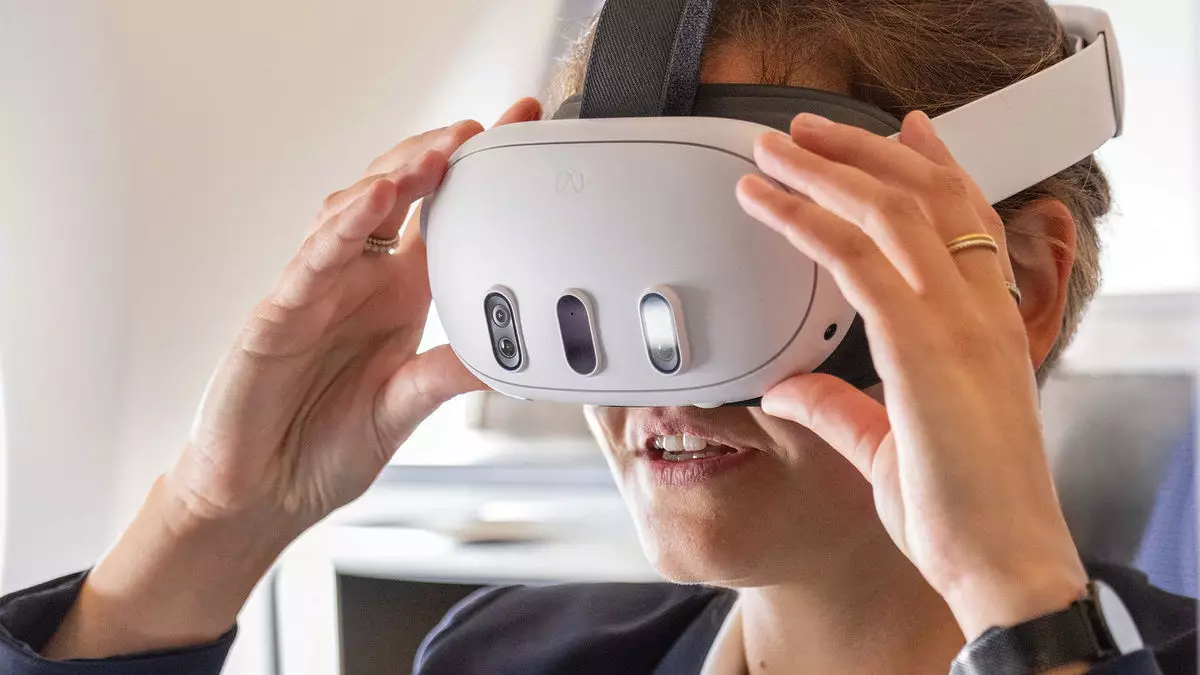As the world of aviation continues to evolve, the integration of technology into passenger experiences is transforming the way we travel. With Lufthansa’s recent foray into virtual reality (VR) onboard its new Airbus A350 Allegris business-class cabins, airlines are beginning to explore innovative in-flight entertainment options. This shift from conventional seatback screens to immersive VR experiences signifies a significant change in how travelers will interact with their environment during flights.
The Experiment Begins
On October 11, Lufthansa introduced mixed-reality headsets—specifically, Meta Quest 3—to a select group of flyers. Initially, this experiment covers a handful of routes, including the Munich-San Francisco flight and the Munich-Chicago O’Hare service. By choosing to offer headsets equipped with unique content, Lufthansa taps into the potential of augmented experiences, enhancing the flying experience beyond what traditional screens can provide. This pilot program came to light during the recent Future Travel Experience Expo, where attendees had the opportunity to engage with this revolutionary technology.
Understanding Mixed Reality
For those unfamiliar with the term, mixed reality encompasses experiences where the digital and physical realms coexist. The Meta Quest 3 can operate in two distinct modes—one merging real-world visuals with virtual elements, and the other immersing users in a completely virtual environment. Lufthansa’s initial offerings include a mix of movies, virtual chess, meditation sessions, podcasts, and information about the flight’s destination. The fully immersive movie experience is a game-changer, allowing travelers to watch films as if on a grand theater screen, rather than constrained by the limited dimensions of a seatback display or a laptop.
Lufthansa’s VR chess game exemplifies the interactive capabilities of this technology. Rather than simply playing on a flat screen, passengers can physically interact with the virtual chess pieces, enhancing the sensation of being present at a traditional chessboard. The added feature of competing against a fellow passenger, represented by an avatar, brings a social component to the gaming experience, potentially fostering connections among travelers.
Additionally, the destination previews enabled by mixed reality are far more dynamic than the standard static information typically presented in-flight. Instead of merely displaying two-dimensional images alongside text, Lufthansa allows passengers to experience virtual flyovers of locations, granting an exciting and engaging way to ignite their travel enthusiasm before arriving at their destination.
Currently, Lufthansa’s VR headsets are available to a limited number of its premium passengers, specifically those utilizing its Allegris business class. The hope is that as more aircraft come equipped with these advanced systems, the reach of this innovative technology will gradually expand to a larger passenger base. Bjoern Becker, the airline’s head of future intercontinental experience, acknowledges that while widespread distribution for all passengers may not happen imminently, there is a bright outlook for integrating virtual reality into the travel experience.
As Becker elaborates, the past four decades of traditional in-flight entertainment require fresh insight. The restricted space aboard aircraft can be positively impacted by this technology, enabling travelers to engage in entertaining and informative experiences without the claustrophobic sensation often felt in an airplane cabin. Furthermore, the commercial potential of VR is significant, providing airlines with new merchandising opportunities—such as advertising products through virtual experience segments, like test-driving new vehicles.
While Lufthansa is making strides, other airlines maintain varying perspectives on the future of in-flight entertainment. For instance, Delta Airlines reports a high utilization of traditional seatback systems among its passengers, suggesting that while VR is promising, it may not replace established methods quickly. Delta’s managing director of customer experience asserts that the evidence indicates a continued preference for traditional in-flight entertainment.
Despite contrasting views, the overarching sentiment remains that airlines must adapt to passengers’ preferences, which could lead to a more multiscreen experience onboard. The technological landscape is undoubtedly shifting, and as VR pricing continues to decline and headsets become more user-friendly, airlines must prepare for what could become a standard feature in future cabin designs.
Lufthansa’s experiment with mixed reality is paving the way for a dramatic evolution in in-flight entertainment. As VR technology finds its footing in the aviation sector, travelers may soon find themselves immersed in rich, engaging experiences that not only entertain but also connect them to the destinations they are traveling to. The emerging synergy between technology and customer experience is crucial for airlines to navigate as they evolve in a fast-paced world. It’s clear that the skies of tomorrow hold exciting potential for enhanced passenger experiences and interaction.


Leave a Reply